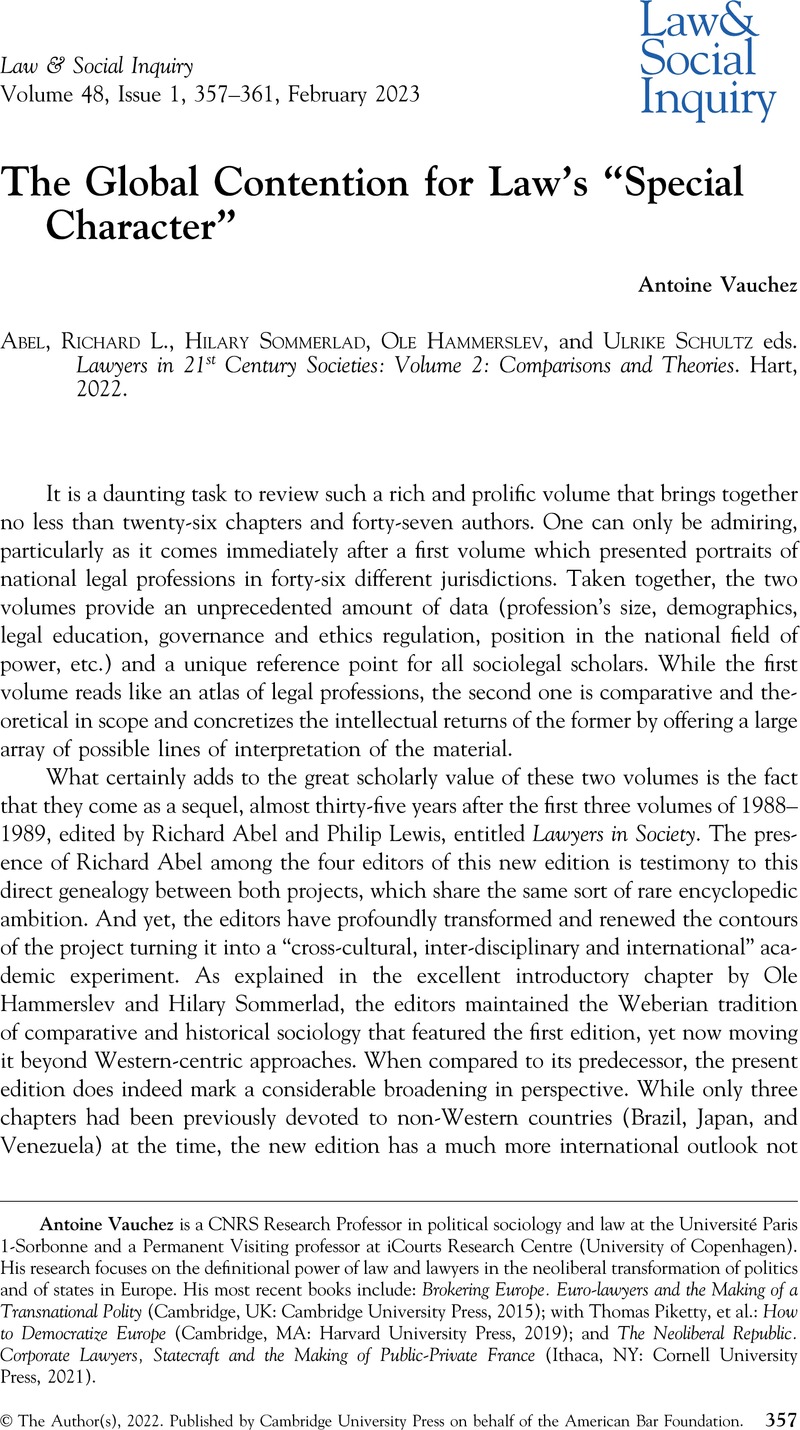No CrossRef data available.
Article contents
The Global Contention for Law’s “Special Character”
Review products
Published online by Cambridge University Press: 02 December 2022
Abstract

- Type
- International Book Essays
- Information
- Copyright
- © The Author(s), 2022. Published by Cambridge University Press on behalf of the American Bar Foundation
Footnotes
His research focuses on the definitional power of law and lawyers in the neoliberal transformation of politics and of states in Europe. His most recent books include: Brokering Europe. Euro-lawyers and the Making of a Transnational Polity (Cambridge, UK: Cambridge University Press, 2015); with Thomas Piketty, et al.: How to Democratize Europe (Cambridge, MA: Harvard University Press, 2019); and The Neoliberal Republic. Corporate Lawyers, Statecraft and the Making of Public-Private France (Ithaca, NY: Cornell University Press, 2021).


